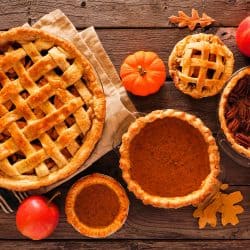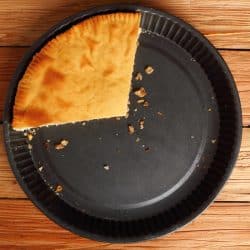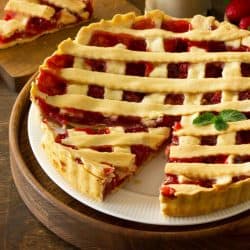So you're thinking about baking a pie! You have everything ready to go. But, you're at the stage where you have to worry about the dough sticking onto the pie pan. More specifically, should you grease and flour and pie pan? If that's what you're trying to find out, let's take a look into it!
It's not necessary to grease and flour a pie pan. If you grease a pie pan, you can end up with a texture you don't want. For a flaky and tender pie crust, do not grease the pan. A light blast of a cooking spray should suffice to avoid sticking. If you add flour, the butter from the crust can potentially form a hardened paste with the flour.
Now that you know the answer, you might have more questions to ask. If grease and flour aren't ideal, what can you use to prevent sticking? Do pie pans of different materials require greasing? If you'd like to take a deeper look into baking pies, keep reading ahead.
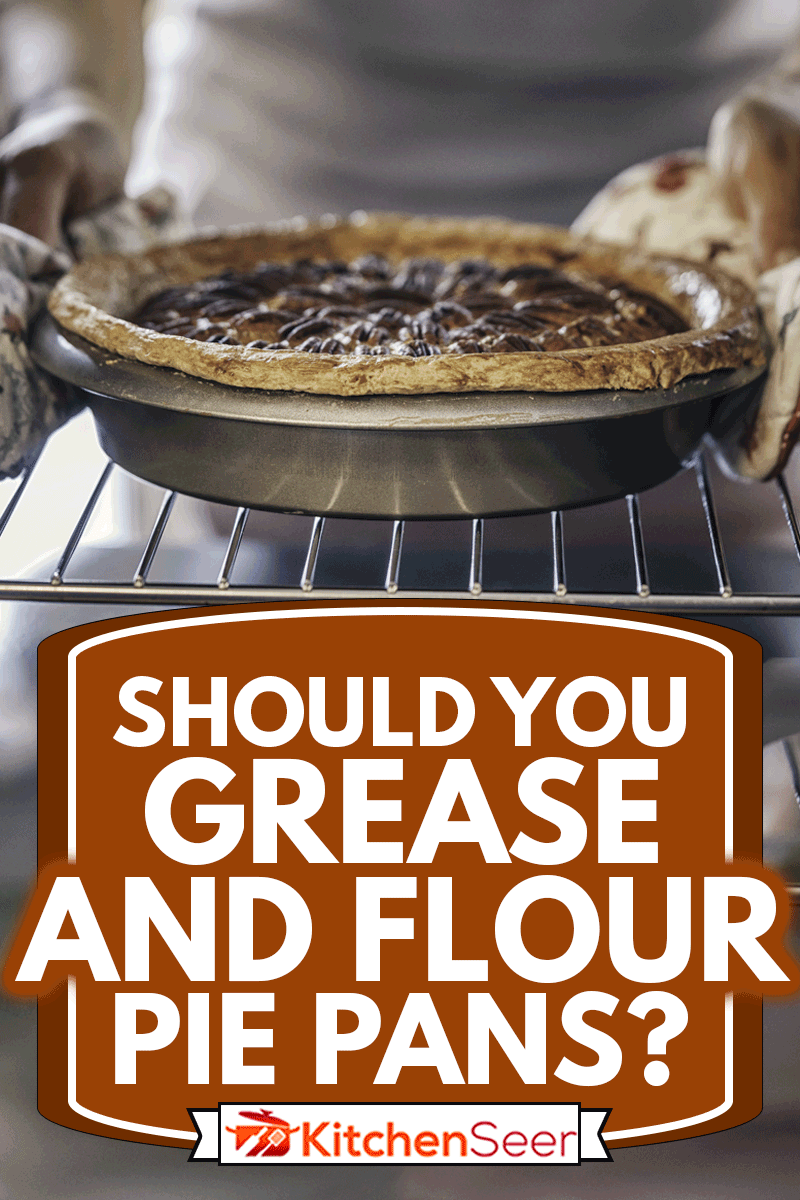
How Do You Keep Pie Crust From Sticking to the Pan?
Of course, we all want to keep the pie from sticking to the pan. After all, it is heartbreaking seeing all the hard work ruined in a second. So, what can we do? Let's first address why the pie might stick to the pie pan.
Why Did It Stick?
If you've prepared a pie previously, try to remember the spot where it stuck. Was it the whole pie? Did it stick in a specific area of the pie pan? These are the questions that can guide you to the solution.
If you found that the whole pie sticks on the pan, it's an indicator that you did not apply enough non-stick spray. However, sometimes it's not the entire pie that sticks. You might see sticking localized to specific areas.
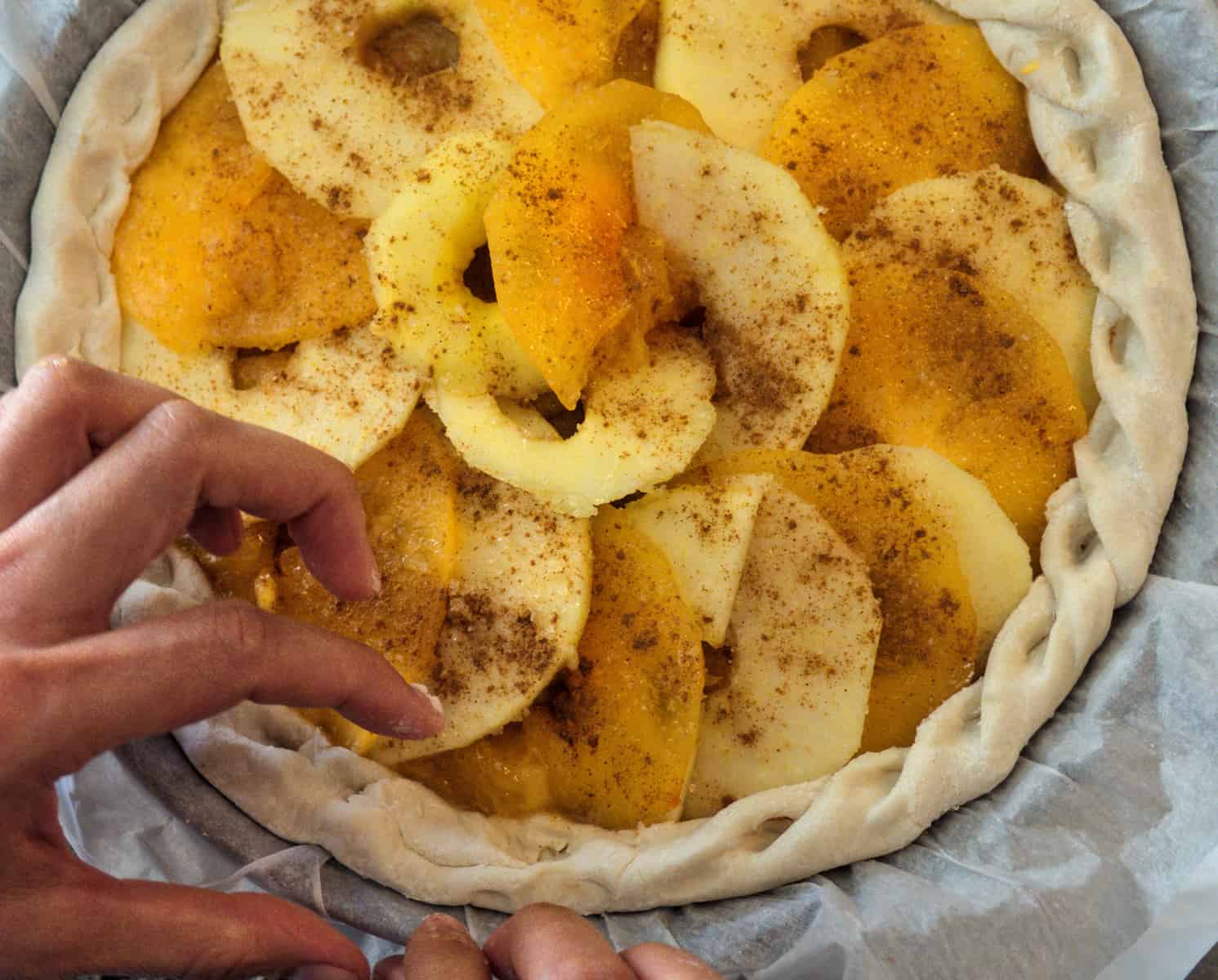
Cracks
In this case, you might want to check your pie crust. If only a few spots are stuck to the pan, you will also see the pie filling spilling out. Meaning, your pie crust has a crack that allowed the inside to spill. So, the filling is what's causing the pie to stay in place.
Solving the Problem
So, with all the information above in mind, we can make some adjustments. For the cases where the entire pie sticks, you will need to make sure you lightly coat the pie pan. You can use baking spray. If you don't have baking spray on hand, you can also opt to use butter.
In the event of cracks, you might want to re-evaluate how thick your pie crust should be. Cracks begin to form when you have heavy pie filling. Additionally, it may also crack if you're filling the pie near its limit. Test the waters by trying out both methods. Make a pie with a thicker crust or reduce the amount of filling!
How Do You Keep Pies From Sticking?
Now let's say you've followed each step but, the pie still manages to stick to the pan! It's a frustrating process. However, there's still more you can do to ensure your pies don't stick to the pan.
The first is to identify how badly it's sticking to the dish. If giving you little resistance, you can scrape the crust off slowly. It isn't the best solution for the sticking problem. But, it ensures your hard work doesn't go to waste!
From here, we can only make adjustments to the ingredients of the pie. We'll start with butter.
Butter
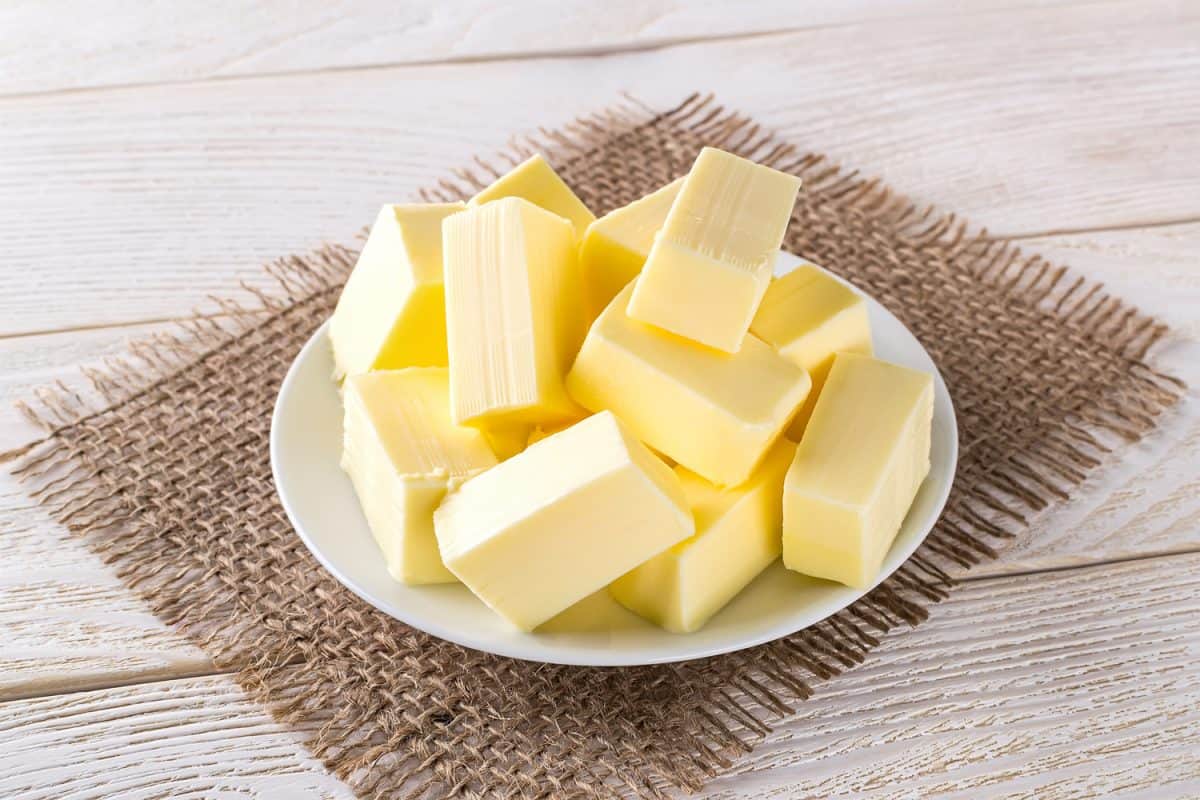
If you've baked before, you might notice that a lot of recipes call for warm butter. You don't want that for baking pies! In fact, you want the opposite! The butter has to be kept as cold as possible. Soft butter will only lead to more sticking problems.
Flour
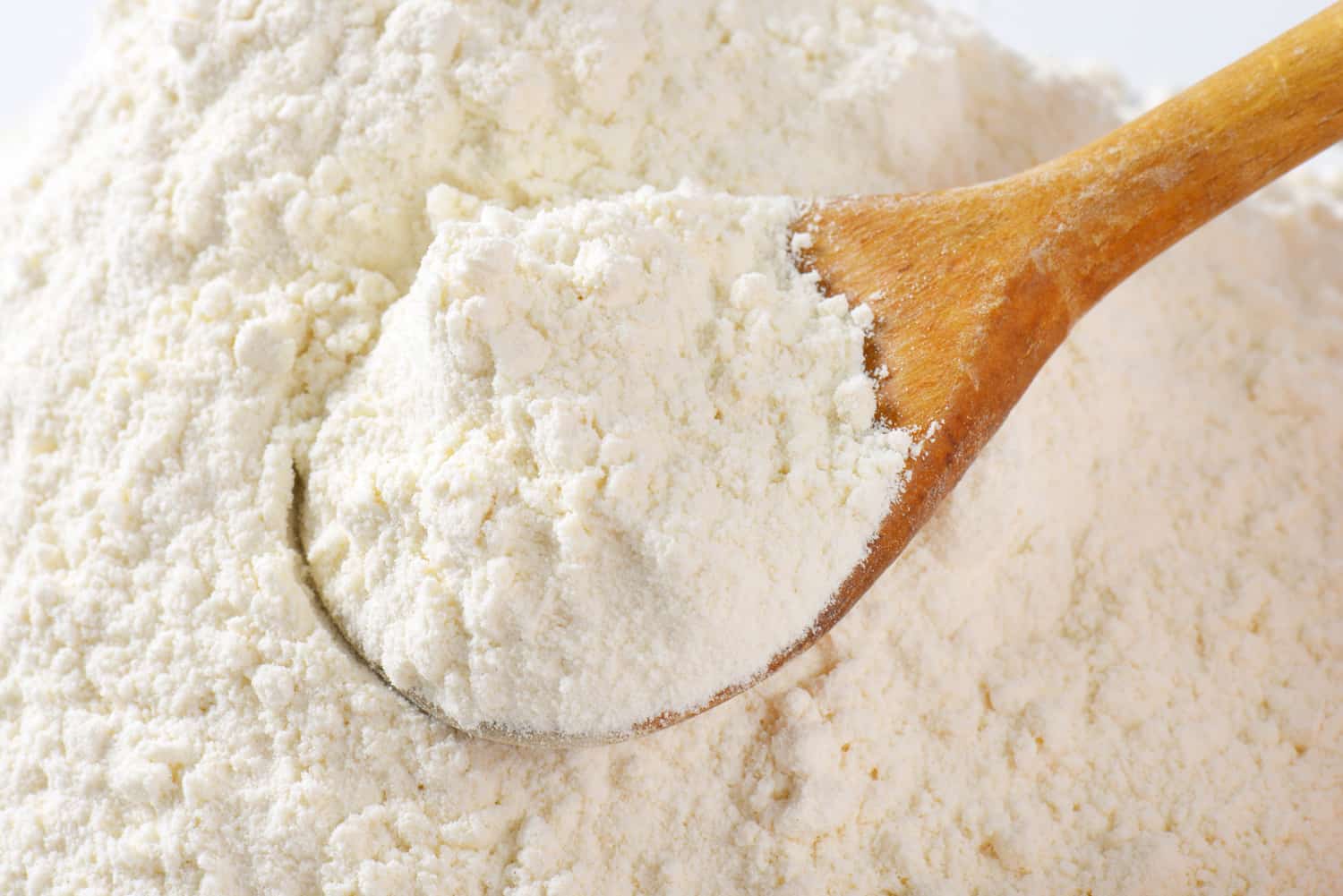
The choice of flour could also be ruining the outcome of your pie. In general, you want a tender crust for your pies. So, you will want to choose a flour that doesn't contain a lot of protein. The choices you have are cake flour and all-purpose flour. Both range from 8-10% in protein content.
Kneading
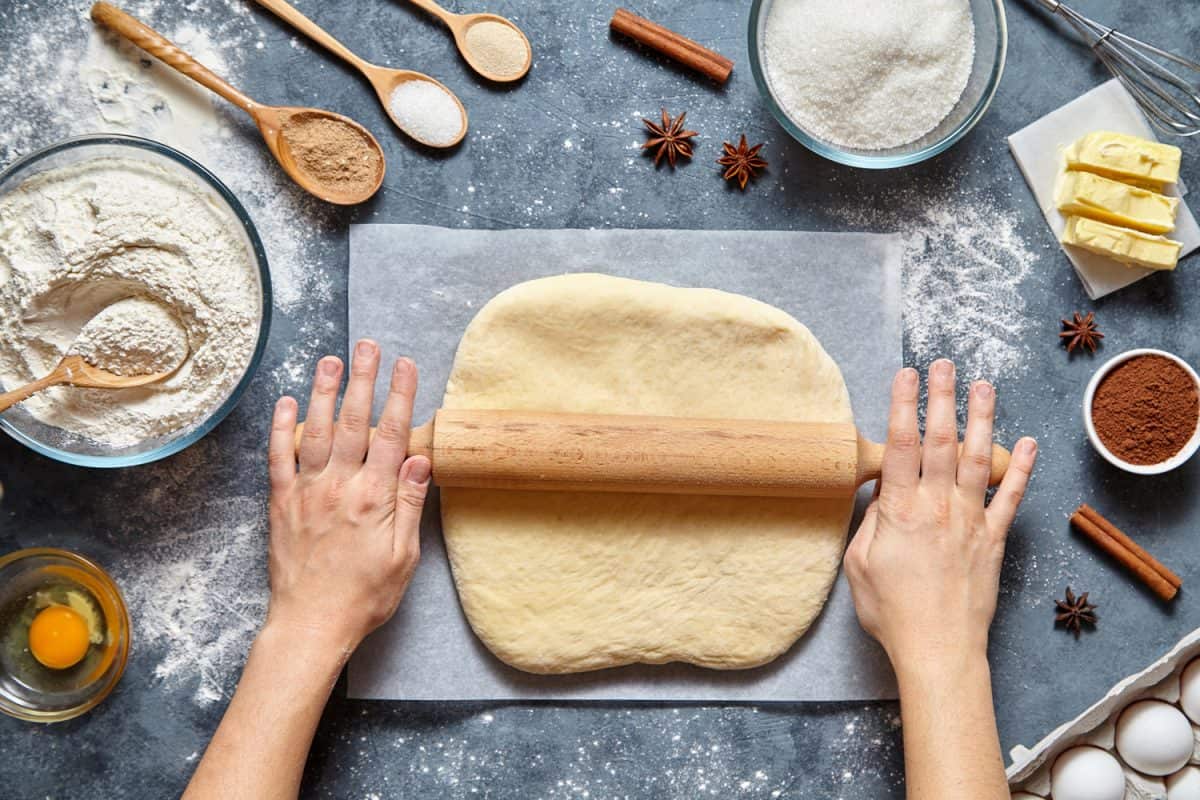
Working the dough is also vital in creating the perfect without sticking problems. Try not to overwork the dough as too much of anything isn't ideal.
You might have to go through trial and error before you work the dough just right. If the dough is too cold or not kneaded enough, you can potentially form cracks when you bake. As you might know by now, cracks will lead to leaks. Since sticking is what we're trying to avoid, preventing cracks from forming should also be the priority.
What Do You Use to Grease a Pie Dish?
To grease a pie dish, you only have two options to make. You can use a bit of butter or lightly spray the dish with cooking spray. It might seem strange. But, pies do not need the extra help to avoid sticking to the pan.
If you're going to serve the pie in the same dish, there's no need to grease the pan. In the best case, lightly greasing the pan can make taking out the first slice of pie simple. This is especially true in the event where the filling spills out.
Why Greasing Isn't Necessary
As one baker points out, pies can contain a lot of butter in their recipes. It is practically self-greasing itself. The process the butter goes through is why you can get a crispy bottom without too much sticking! Additionally, pies tend to shrink as they bake.
It shrinks because moisture is escaping the dough. By the end of the baking process, it should have shrunk enough to release seamlessly from the pie dish.
Do You Need To Grease a Glass Pie Pan?
Click here to see this glass pie pan on Amazon.
With the information above, we can make conclude that greasing a glass pie pan isn't necessary. Regarding glass pie pans, it's more likely that you should avoid greasing altogether. Glass is known as the best material to bake your pies in!
The reason being that it heats slower than other dishes. While that might seem a bit off-putting, slower heating promotes consistent baking and browning. So, you won't have to worry about overcooking or undercooking. Ideally, the whole pie should cook at the same pace when using a glass pie dish.
It's also advantageous to use a glass dish because it allows you to see the browning at the bottom of the pan!
Do You Grease a Pie Dish Before Blind Baking?
Blind baking is a process where a pie crust is partially or fully baked. It's to ensure that it does not get soggy at the bottom. As some bakers suggest, it's necessary for specific situations. A pie will need to be fully baked if the filling does not need to be cooked. On the other hand, it will need to be partially baked for fillings that go into the oven.
That begs the question if greasing the pie dish beforehand is necessary for blind baking? In general, you don't have to grease the pie dish. It's not a big concern because you're focusing on partially/fully preparing the crust. There's no filling to make the crust stick to the pan.
Do You Grease a Pie Plate for Graham Cracker Crust?
Applying grease on a pie plate for a graham cracker crust depends on your needs. Any crust can tend to stick on a pie plate. In the case of a graham cracker crust, which contains a lot of butter, it's still a reality.
From here, you have two options to choose from to perfect your crust. You can opt to bake the crust. As some suggest, baking allows the butter and sugar to bind well enough to provide structure. It will have a sturdier texture. If that's what you want, you can add a light coat of baking spray to avoid as much sticking as possible.
The other option you have to give your graham cracker crust structure is leaving it in the refrigerator. For this method, you will have to refrigerate the crust for several hours. In the end, the butter should be hard enough to hold everything together.
Final Takeaway
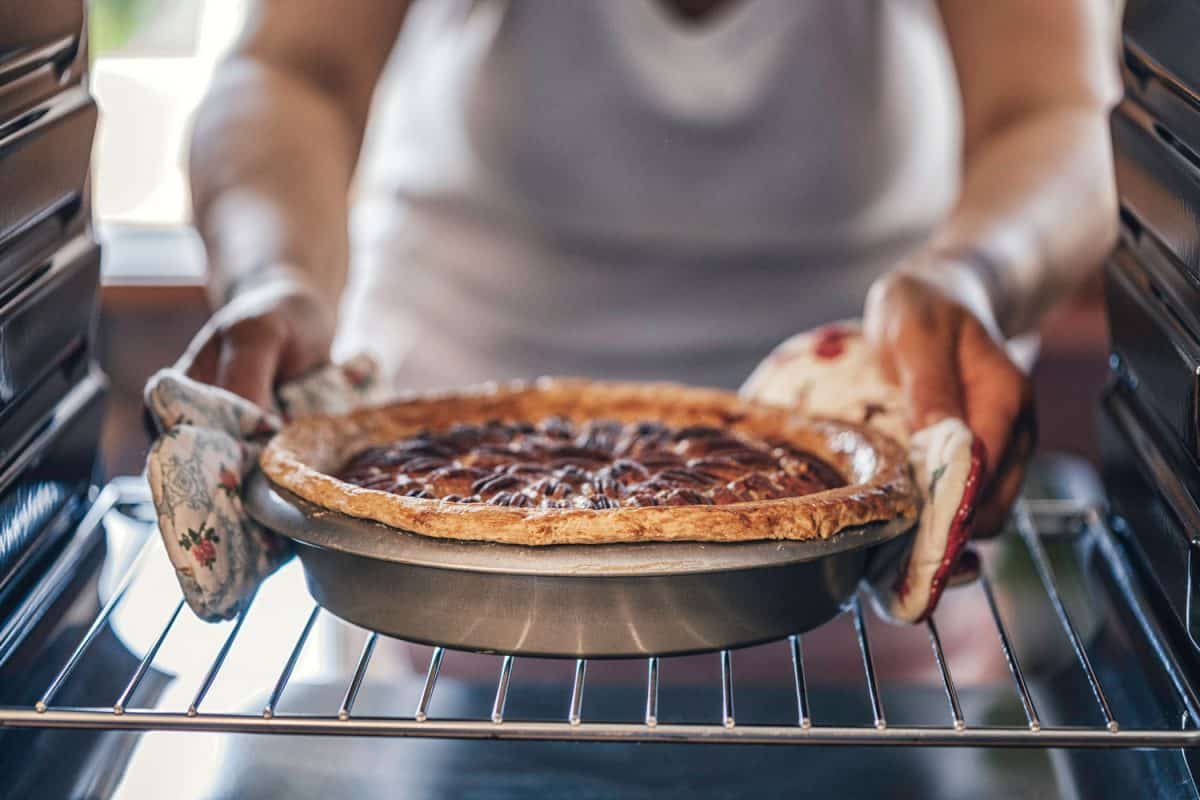
Baking is always a tricky job! You will most likely have to run through a lot of trial and error before you bake the perfect pie. Of course, we can prevent as much sticking as possible with a bit of research. We hope you found the article insightful.
Before you go, do you have other greasing concerns? Are you also curious if you need to grease a pizza tray? If so, you can find out more by checking out our post here.
If you're thinking about using a springform pan, you can also find out if greasing is necessary by checking out our post here. Until next time!


![A woman making a delicious pie in her kitchen, How To Put Dough In A Pie Pan [A Complete Guide]](https://kitchenseer.com/wp-content/uploads/2021/08/A-woman-making-a-delicious-pie-in-her-kitchen-250x250.jpg)

